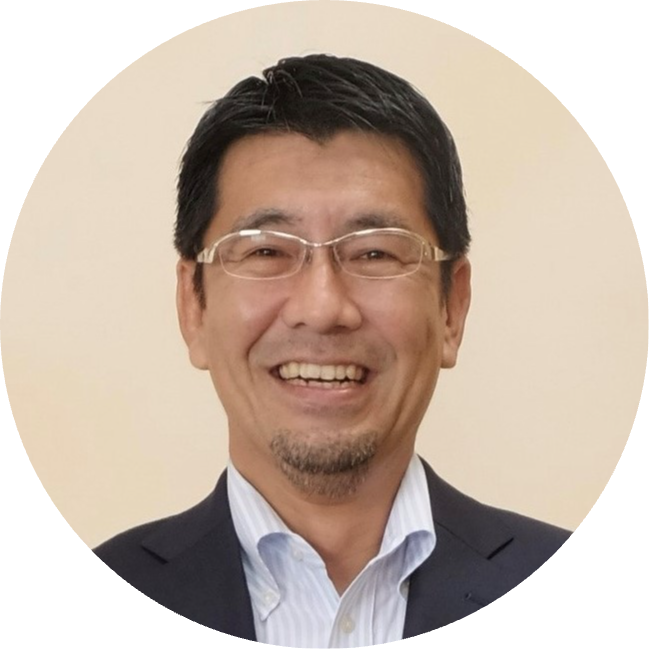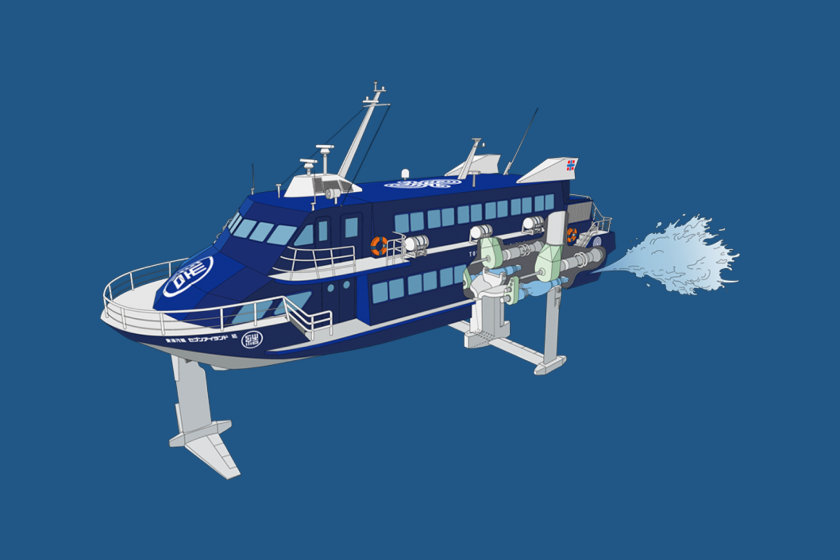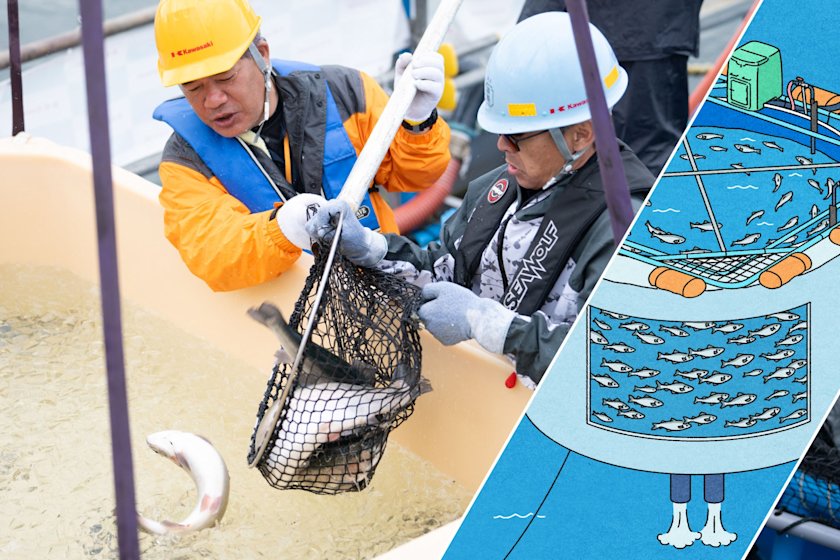Visualizing carbon dioxide emissions — the key to pursue clean hydrogen use

To achieve carbon neutrality by 2050, the international community is facing the common challenge of reducing greenhouse gas (GHG) emissions. One of the solutions to address this challenge is hydrogen, a clean energy source that does not emit carbon dioxide (CO2) when used. However, some CO2 may be emitted during hydrogen production or transportation. Therefore, to truly promote the use of clean hydrogen, Kawasaki, a world leader in the international transportation of liquefied hydrogen, is working to develop the international rules for evaluating CO2 emissions throughout the hydrogen supply chain. This will help to promote the use of low-carbon hydrogen energy. Ms.Saito of Kawasaki explains this significant project.
Hydrogen: A promising clean energy

In the year 2023, record-breaking temperatures or weather were reported around the world. Global warming is believed that the reason for this is, and there is an urgent need to accelerate actions to address it.
To stop global warming, the most important thing is to reduce emissions of greenhouse gases (GHGs), represented primarily by carbon dioxide (CO2). In line with the trend of ESG investment, companies are also required to reduce GHG emissions across their entire business activities based on the “Scope” concept while disclosing emissions and reduction targets.
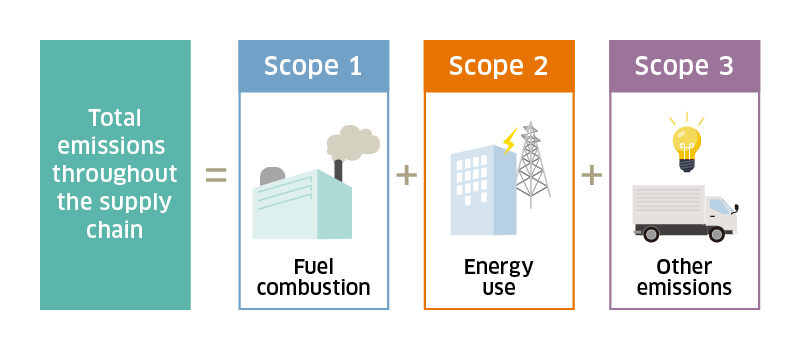
While companies are working to reduce GHG emissions, they also need to use alternative energy to continue their businesses and operations. This is where clean energy hydrogen, which does not emit CO2 when used, is expected to play a key role.

Japan is one of the leading countries in the world in terms of hydrogen utilization. Under the Roadmap for the fuel cell and hydrogen technology developments, which has been publicly available since 2005, and the Basic Hydrogen Strategy, the first of its kind in the world when it came out in 2017, Japan has been leading the world in the use of hydrogen energy, such as the practical application of fuel cell vehicles (FCVs) and the widespread use of stationary fuel cells. For Japan, with the scarcity of energy resources, ensuring stable energy supply is a vital issue. Aligning with the government's advanced efforts, Kawasaki was quick to establish the concept of the “International Supply Chain for Liquefied Hydrogen” in 2010, which aims to stably and cost-effectively supply hydrogen from outside Japan in large quantities for domestic use, mainly for power generation. Since then, we have been working to design and build the world's first liquefied hydrogen carrier.
The importance of visualizing CO2 emissions throughout the hydrogen supply chain
Hydrogen can be classified into three main categories based on its production route: gray hydrogen, blue hydrogen, and green hydrogen. When hydrogen is produced from fossil fuels such as coal or natural gas, CO2 is inevitably emitted. Gray hydrogen results from production routes that simply emit CO2 into the atmosphere and is considered unfavorable in terms of carbon neutrality.
Blue hydrogen is produced in a way similar to gray hydrogen, but the CO2 emitted during production is captured, utilized, or stored to reduce CO2 emissions. Green hydrogen is produced by breaking down water (H2O) using electricity from renewable sources, such as solar or wind power. This production process does not emit CO2.
However, even blue hydrogen and green hydrogen could emit CO2 during transportation processes, depending on the fuel used by ships, trailers or other means of onshore transport.

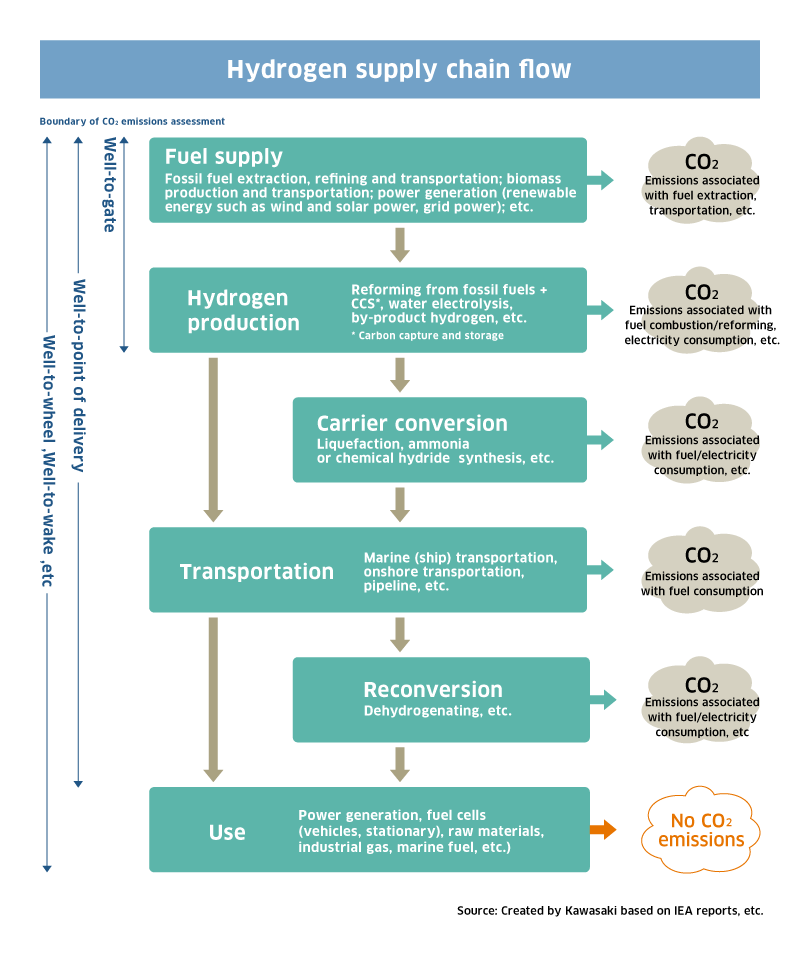

If we try to decarbonize business activities by using hydrogen, even if we can achieve zero CO2 emissions at the stage of using hydrogen as fuel, it is meaningless if the CO2 emissions in the upstream stages of producing and transporting the fuel are large. Therefore, we need to evaluate and disclose the CO2 emissions across the value chain from production to use of hydrogen that is procured as fuel. It is very important to “visualize” emissions and demonstrate the low-carbon characteristics of hydrogen with transparency and reliability, so that users can use hydrogen with confidence.
In order to promote the widespread use of hydrogen and facilitate its social implementation, it is essential to have proof of its low carbon emissions. However, the evaluation methods for this are still under discussion in each country. On November 30th, ISO issued a Technical Specification on the methodology for calculating CO2 emissions during the production and transportation processes, and we contributed to its development. The detailed evaluation methods will be established along with the examination and realization of the actual supply chain, and specific evaluations of GHG emissions will be carried out.
Kawasaki is making a concerted effort to address this challenge. Kawasaki has world-leading technical expertise and data on the international liquefied hydrogen supply chain, and can work with relevant organizations to develop methodologiea and rules for evaluating the CO2 emissions.
Collaborating with an international third-party certification body to establish global rules
Kawasaki has already built the world's first liquefied hydrogen carrier, the Suiso Frontier, and completed technical verification, including transportation of liquefied hydrogen between Japan and Australia with partner companies. It is currently scaling up equipment and facilities, including large-scale liquefied hydrogen carriers, for commercialization. Along with these activities, it has accumulated knowledge on evaluating CO2 emissions during transportation. Utilizing know-how as a leader in the transportation of liquefied hydrogen by ship, Kawasaki is working on developing a methodology for evaluating CO2 emissions in each process of hydrogen production, transportation, and storage.

In May 2023, we have started collaboration with DNV, one of the world’s largest and oldest third-party certification bodies, as a key partner in the study of specific methods to calculate CO2 emissions of the supply chain of liquefied hydrogen. DNV has a great wealth of experience in third-party certification related to greenhouse gas emissions, which include technical cooperation on the development of “Carbon Footprint Practical Guide” (i.e., guidelines for calculating and reporting emissions per product as developed by Japan’s Ministry of Economy, Trade and Industry and Ministry of the Environment). In addition, as a ship classification body, it has a wide variety of knowledge on maritime transportation. Through discussions with DNV, Kawasaki is establishing a specific method to calculate the CO2 emissions of liquefied hydrogen transportation, especially during maritime transportation, using the data accumulated in our hydrogen business to date. The ultimate goal is to reflect this method in international rules and standardize it. DNV highly evaluates the capabilities of Kawasaki, which is the only company in Japan, a hydrogen-advanced country, that has the know-how to transport liquefied hydrogen and has actual transportation experience.
There are others as part of our involvement in international rulemaking. Yoshinori Kanehana, Chairman of Kawasaki, has served as co-chair of the Hydrogen Council, an organization of global companies to promote the role of hydrogen in the global transition to alternative fuels, involving around 150 hydrogen-related companies from across the world. The Council has been actively discussing methodologies for evaluating emissions,
CO2 emissions accounting rules have generally been led by Europe. However, Japan is ahead in the area of emissions accounting for the transportation of liquefied hydrogen by ship, as it is pursuing development of international hydrogen supply chains. International rules have not yet been established in this field. Kawasaki is well positioned to lead the development of these rules.
Expectations for Kawasaki to deliver a breakthrough in Japan
Koichiro Tanabe, Senoior Manager, Decarbonization and Sustainability, Supply Chain & Product Assurance, DNV Business Assurance Japan K. K.
GHG emissions assessment is essential for setting emissions reduction targets and policy making in climate change mitigation. It is also a key to selecting investment targets and determining the direction of innovation for companies. For this reason, Europe has been at the forefront of global rule making on GHG assessment standards.
Japan is also contributing to GHG emissions reduction by utilizing its advanced technologies. However, due to its high dependence on fossil fuels, Japan's influence on the international rule-making process for GHG emissions is limited at this time. We expect Kawasaki to play a key role in delivering a breakthrough in this space.
Building a world where hydrogen is safely produced, transported, stored, and used

Liquefied hydrogen is 1/800th the volume of gaseous hydrogen, making it more efficient to transport and store. However, it must be maintained at a cryogenic temperature of -253°C during the transportation, which is about 100°C colder even than liquid natural gas (LNG). Kawasaki has a strong track record in LNG transportation and has also supplied liquefied hydrogen storage tanks to the Japan Aerospace Exploration Agency (JAXA) Tanegashima Space Center. Leveraging its expertise in cryogenic technology, Kawasaki built the Suiso Frontier using its proprietary technologies. Kawasaki is also steadily preparing to design and build a large carrier that can transport about 10,000 tons of hydrogen, with the goal of commercialization in the mid-2020s.
In the future, liquefied hydrogen production is expected to expand beyond Australia to other countries, such as the Middle East, which has abundant economically competitive electricity from solar power. In any case, transportation by liquefied hydrogen carriers is essential for commercialization.

The use of blue and green hydrogen is expected to accelerate in countries that consider using it as a clean energy source. To achieve this, it is essential to build hydrogen supply chains and to evaluate CO2 emissions in a transparent and reliable manner throughout the chains. Kawasaki will actively work on CO2 emission accounting rulemaking as well as technological development, going beyond the role of the manufacturer to become a key player in building global hydrogen supply chains.
The construction of global hydrogen supply chains that cover the entire process of producing, transporting, storing, and using hydrogen is not something that can be completed by a single company. The development of rules for hydrogen will also involve many stakeholders. Kawasaki will work with DNV to lead the way in the field of CO2 emission accounting and make the low-carbon value of hydrogen visible. By advancing these efforts, Kawasaki, along with partners who share the same goals, will help to build a world where hydrogen can be produced, transported, stored, and used safely, realizing hydrogen-powered societies and global carbon neutrality.

Hydrogen Strategy Division, Technology Group, Standard & License Department & Hydrogen Council Promotion Office
Senior Staff Officer
